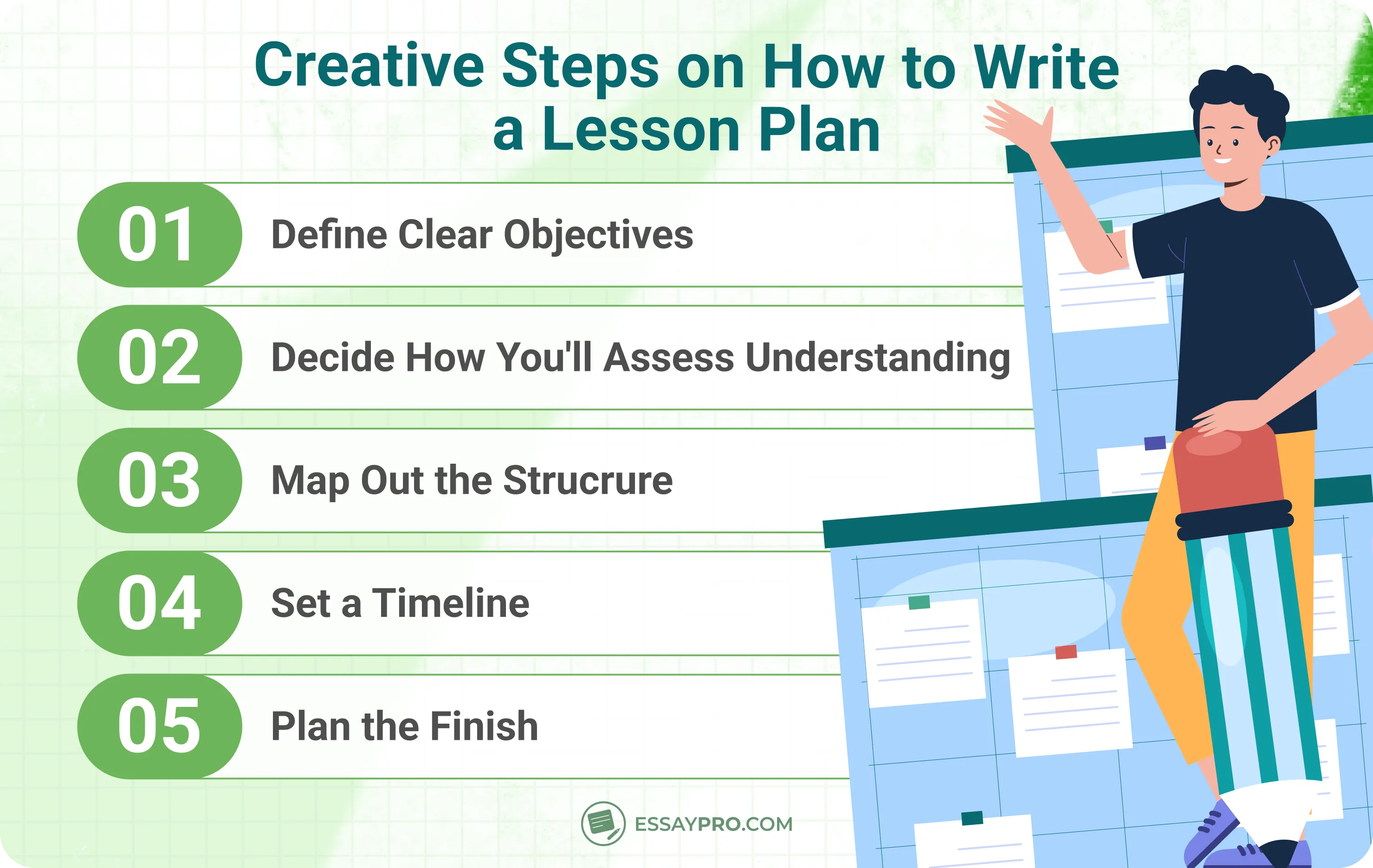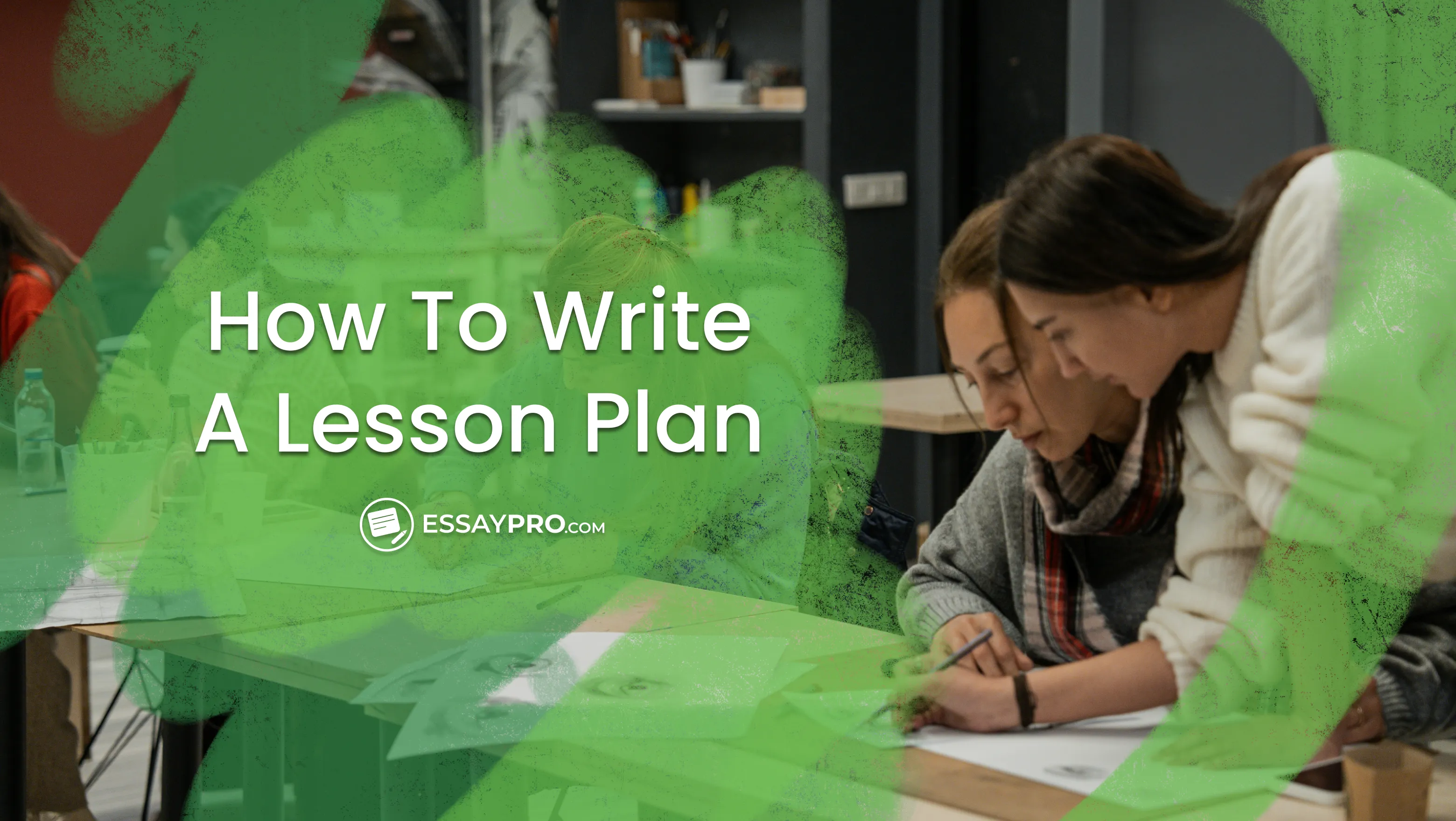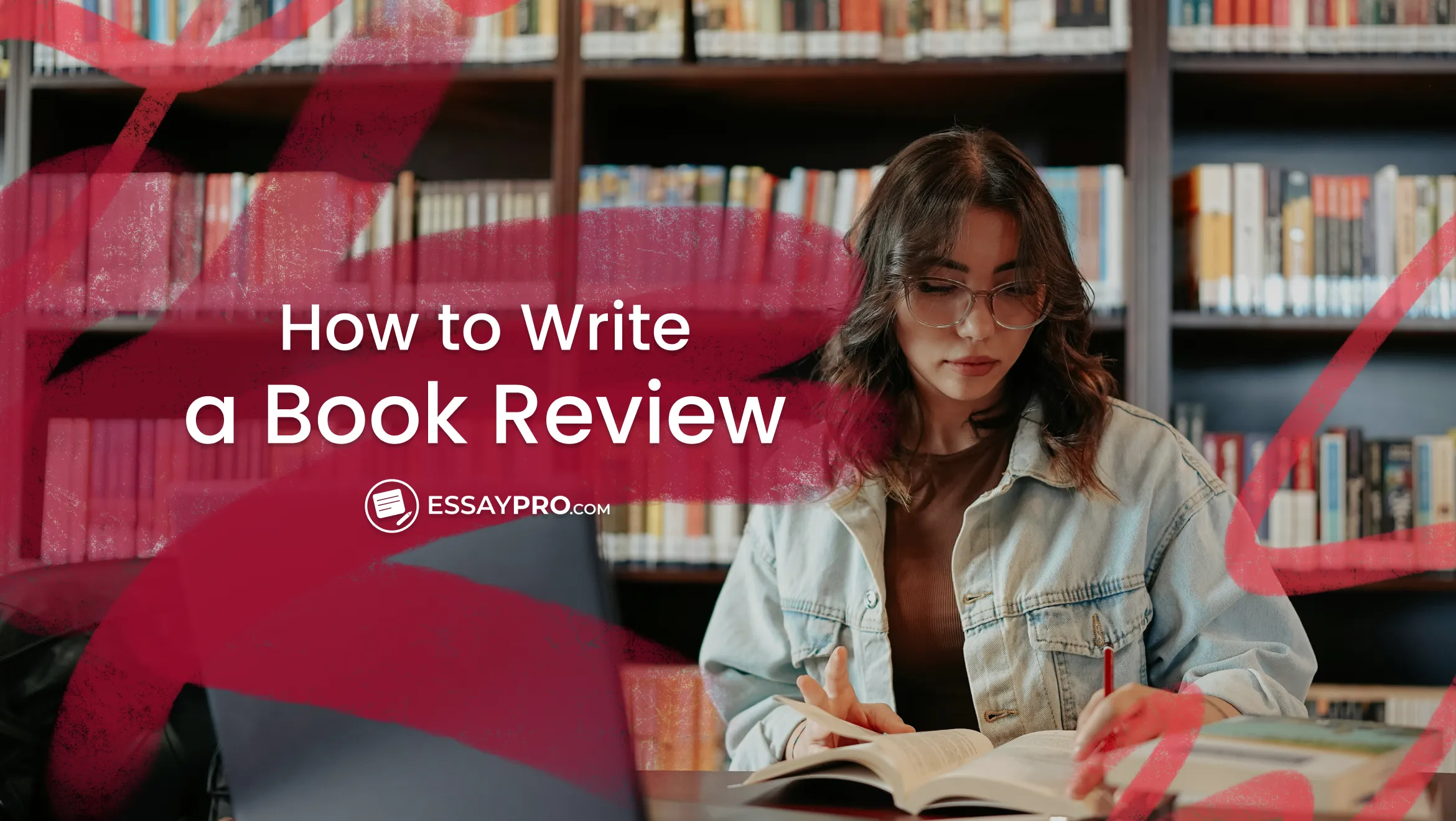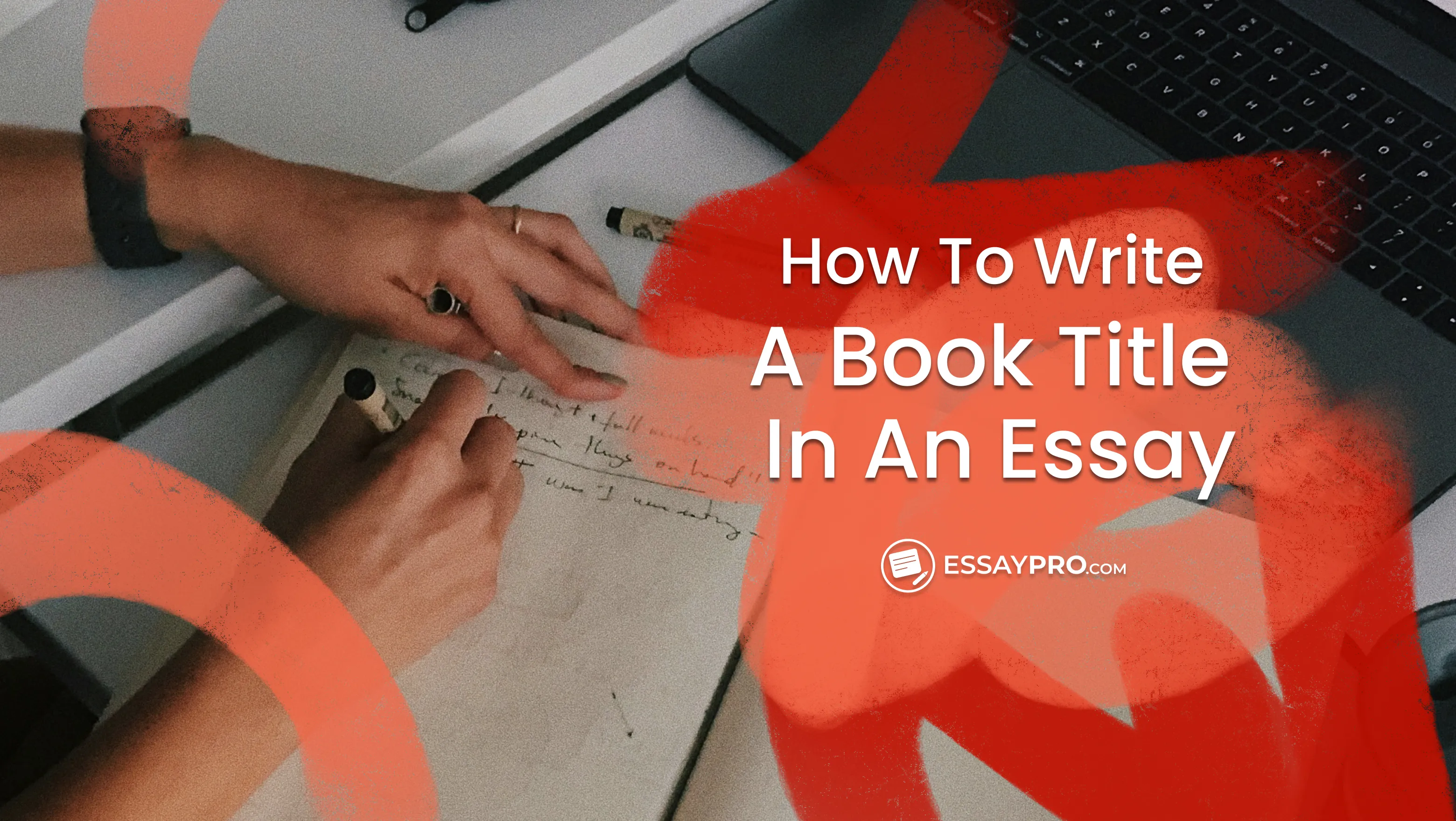No one talks about the mental gymnastics that happen the night before a big lesson. You've got the topic. You've got the standards. You've got that one student who finishes everything too fast and another who never takes out a pencil. Somehow, it all needs to come together. Strong lesson plans are what you need to keep the chaos at bay.
This guide will help you with lesson planning so they actually work. And if you're juggling your studies with student teaching and can't seem to get through the end of assignments, you can always ask for help. EssayPro can lighten your workload with professional academic support.


What Is a Lesson Plan?
A lesson plan is a teacher's playbook. It outlines what you're teaching and how you'll be teaching it. A successful lesson plan includes a clear objective and the methods you'll use to make sure the message lands. It's not a script, though. It's more like a skeleton: something to hold up the learning while the students build the rest themselves.
Importance of Lesson Planning
Have you ever walked into a room and forgotten why you went in? Teaching without a plan feels like that. The 15 pairs of eyes staring back at you don't make it any easier. Creating a lesson plan gives the day its shape. Without it, you're guessing. With it, you're choosing.
Lesson planning helps you see problems before they happen. You know what materials are missing. You know what might trip students up. More than anything, it shows respect: for the students, for the subject, and for yourself as an educator.
Lesson Plan Format
There's a rhythm to a good plan. It doesn't need to be fancy. Just clear. Reliable. Most teacher lesson plans include these parts:
- Objective – What you want students to walk away knowing
- Standards – Not just the what, but the why
- Materials – Markers. Slides. The weird prop you swore would make sense
- Warm-up – A question. A quote. Something that cracks the silence
- Direct Instruction – This is where you teach
- Practice – They try. You walk around. Mistakes happen. That's the point
- Assessment – You find out what stuck and what didn't
- Closure – A final thread to tie it all together
- Reflection – What felt right? What needs rethinking?
How to Write a Lesson Plan: Creative Steps
A blank template won't save you. You can fill out every box and still feel like the lesson falls flat. That's the thing about preparing your lesson plan: beyond organizing time, you're building an entire experience. Sometimes that starts with structure. Sometimes all you need is a spark. The best plans leave room for both.
Here's a flexible path you can shape around any topic:

Define Clear Learning Objectives
This is exactly where every strong plan begins: plan your lesson by asking one clear question: what's the point? Learning objectives should be sharp enough to guide you but clear enough for students to recognize when they've hit the mark. "Learn about ecosystems" doesn't cut it. "Explain how energy moves through a food chain using accurate terms" gets closer. Try thinking in terms of action:
Decide How You'll Measure Understanding
You've got your objective. How will you know it landed? What signs will tell you that the idea clicked?
You might notice it in the way a student explains something to their peer. Or the silence that follows a hard question, the kind of silence that means they're actually thinking. Formal checks are fine. But informal ones? They're gold.
Map Out the Lesson Flow
Every class has its own current. The trick is building a lesson that rides with it, not against it. Start by picturing the energy in the room. Will they be restless? Curious? Half-asleep? Let that determine how you move through the content.
When you plan your lesson this way, the parts connect. Nothing drags. Nothing jars. Here's a rhythm that tends to hold:
- Hook: Wake up the room.
- Teach: Give them the tools. Clearly, briefly.
- Try: Let them work things out by themselves.
- Check: Step in and guide.
- Shift: Keep things moving.
Set a Realistic Yet Flexible Timeline
Some days, 20 minutes fly. Other times, five drag on without the end in sight. When you prepare your lesson plan, estimate how much time each part needs, then trim a little. If you planned four activities, consider cutting one. You won't miss it. You'll be glad for the space.
Check out our AI paragraph rewriter if you need your writing to sound more human.
Plan the Finish
Don't just trail off when the clock runs out. Closure isn't just a formality but often something that determines how the entire lesson lands. Even if everything didn't go according to plan, this is your chance to gather the pieces and let students carry something out with them. Could be a sentence. Could be a question.
Presenting Your Lesson Plan During Class
Planning is one thing. Standing in front of students and trying to bring that plan to life? That's where it all gets tested. The moment class begins, the paper version of your lesson plan needs to come alive. No plan survives exactly as written. That's not the point. If you're too focused on sticking to the script, you might miss what's happening in the room. Here's what helps the plan feel less like a checklist:
- Open with the big picture. Tell them where they're headed before they start walking.
- Transition with intention. Use small cues or clear signals to carry students into the next part.
- Read the room. If they look confused, pause. If they're into it, lean in.
- Anchor everything in the goal. When things drift (and they will), gently point the class back to the objective.
- Let some things go. A good discussion might take you off-course for a minute. That's not failure. That's real learning happening.
Reflecting on the Lesson After Class
The class ends. The door closes. It's quiet again. Now comes the part that students don't see, but it's just as important as the teaching process itself. Reflection is where you make sense of it all. Don't skip it. Don't overthink it, either. Just stop, for five minutes, and ask yourself what really happened in that room. Here's what to check in with:
- Did they reach the goal? Not everyone, maybe, but did most students get where you wanted them to go?
- What felt clunky? Was there a moment that dragged? A part that didn't quite land the way you pictured it?
- Were you rushing? Or stretching? Think about the timing.
- Where was the energy? What grabbed their attention? What didn't? These are clues you'll use next time.
- What's worth repeating, and what's not? Capture that now. Tomorrow you'll forget.
Lesson Plans for Different Grade Levels
One lesson plan won't work for every age group. That might sound obvious, but it's easy to forget when you're knee-deep in standards and due dates. Students change fast. From one grade to the next, what holds their attention can flip. So when you create lesson plans, you have to keep grade levels in mind.
Elementary School
Elementary students ask "why" before you even start the sentence. That's part of the fun (and part of the challenge). Lesson plans for elementary school have to move. If students aren't acting something out, they're probably staring at the clock or just spinning in their chairs.
At this level, the structure matters just as much as the activity. Children rely on routines. You might explain something clearly on Monday, and by Wednesday, explain it again as if it never happened. That's not a flaw. That's childhood. Every step gets repeated, every instruction broken into smaller steps than you think you need. Make room for wonder. And make peace with noise because it usually means they're learning.
Middle School
Middle school students will surprise you in two directions: sometimes thoughtful and curious, other times distractible. This is why lesson plans for middle schools need to be flexible without being too loose. They need structure for focus, but they also need movement. So, let them talk. Let them unpack content with a partner, perhaps. But guide what they're talking about.
Let's say you're teaching subordinating conjunctions examples. If you frame this lesson like a worksheet, no one will listen. You need to find a way to make students interact with the material. They must see why this matters; otherwise, the lesson won't stick. Even then, it might take a few tries.
High School
High school classrooms feel different the moment you step in. There's more independence in the air, but also a lot more pressure. Students want to know what they're learning connects to something real.
High school lesson plans can go deeper, but that doesn't mean they should get longer. Keep your instructions clear and purposeful. Trust students with complexity, but check in more often than you think you need to. They won't always tell you when they're lost. Also - don't underestimate humor. Or a well-timed story. Or just pausing long enough to let a quiet student finally say something.
Lesson Planning Inspiration
Sometimes your brain just won't give you anything. If that’s the case for you, try these to shake something loose:
- Talk to students. Ask what they care about. You'll get more ideas than you expect.
- Use headlines. A single news story can anchor an entire discussion or writing prompt.
- Watch a movie scene. One moment of dialogue can teach tone, argument, or theme.
- Pull from music or art. Images and lyrics have emotional weight that students feel before they analyze them.
- Scroll through teacher forums online. Some of the most brilliant ideas come from tired teachers just sharing what finally worked.
- Revisit books you love. Not everything has to come from a curriculum guide.
Final Thoughts
Lesson planning is the invisible part of teaching. You spend hours building it, rewriting it, and then walk into the room and make it look like it all just happened naturally. But that's the power of a good plan. It holds the structure while everything else can move freely around it. What matters is that you build something students can actually learn from.
And if you're trying to make sense of objectives and assessments, and have no more time left for your academic tasks, EssayPro can step in. Whenever you need help with English assignment without feeling like you were just handed a template, you can ask our professional writers for a hand.
FAQ
What Is the Format for a Lesson Plan?
You usually start with the objective and lay out the steps to get there. Add materials and timing, too. Then, decide how you'll check if students understood the lesson.
What Are the 5 Parts of a Lesson Plan?
Five parts of the lesson plan include:
- Objective – What students will learn.
- Warm-up – Something small but catchy to get them thinking.
- Instruction – The core of the lesson.
- Practice – Let them try. Guide them, but don't micromanage.
- Assessment - Check whether they understood the material.
- Closure – Tie it together. Ask something that lingers.
How to Make a Lesson Plan Step by Step?
Here's how to approach a lesson plan:
- Start with the learning goal.
- Choose your materials.
- Plan your introduction.
- Outline the instructional steps.
- Design the student activity.
- Add a quick assessment.
- Wrap it up.

Ana Ratishvili
Ana is a professional literary writer with a Master’s Degree in English literature. Through critical analysis and an understanding of storytelling techniques, she can craft insightful guides on how to write literary analysis essays and their structures so students can improve their writing skills.
- Planning a Lesson | Centre for Teaching Excellence. (n.d.). Uwaterloo.ca. https://uwaterloo.ca/centre-for-teaching-excellence/catalogs/tip-sheets/planning-lesson
- How to Write an Early Childhood Education Lesson Plan | Penn Foster. (n.d.). Www.pennfoster.edu. https://www.pennfoster.edu/blog/write-a-lesson-plan-for-early-childhood-education
- Lesson Planning | Curriculum and Instruction Support. (2021). Www.cmich.edu. https://www.cmich.edu/offices-departments/curriculum-instructional-support/teaching-your-course-and-fostering-community/lesson-planning








